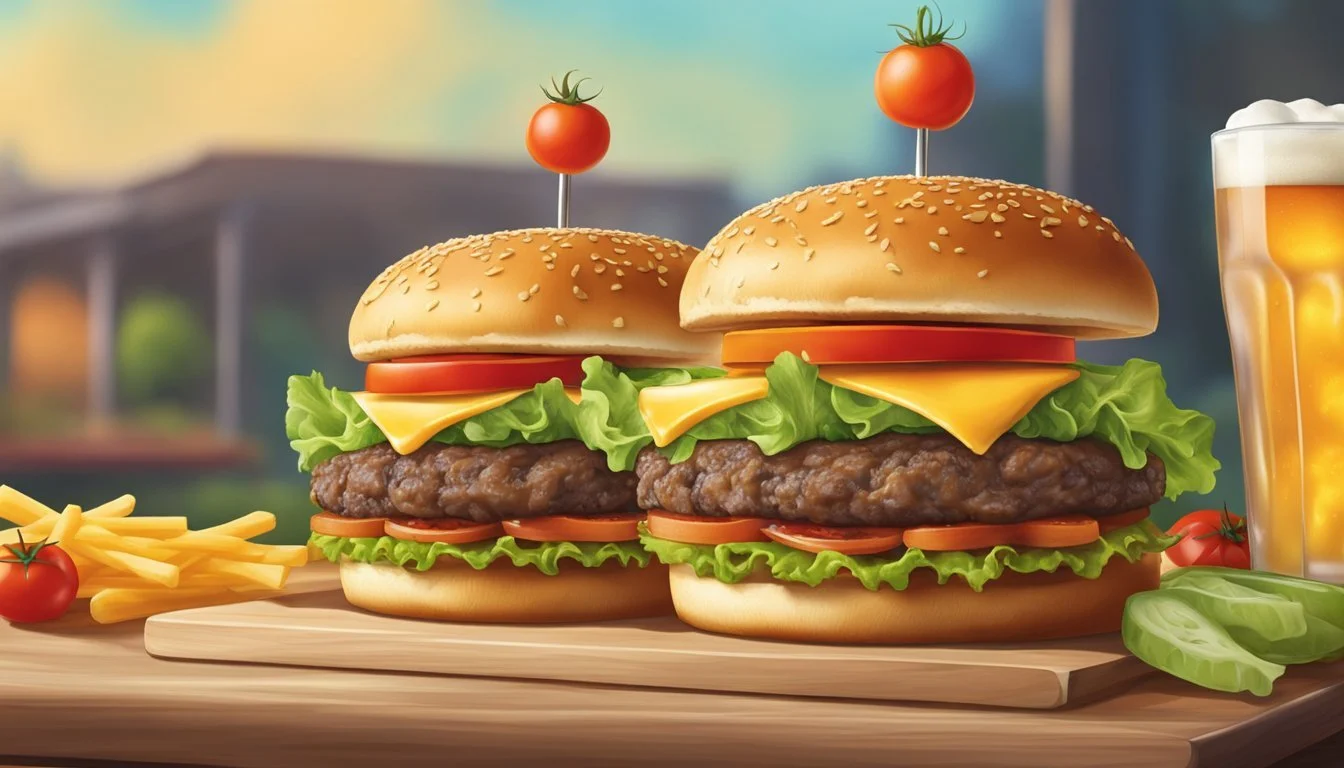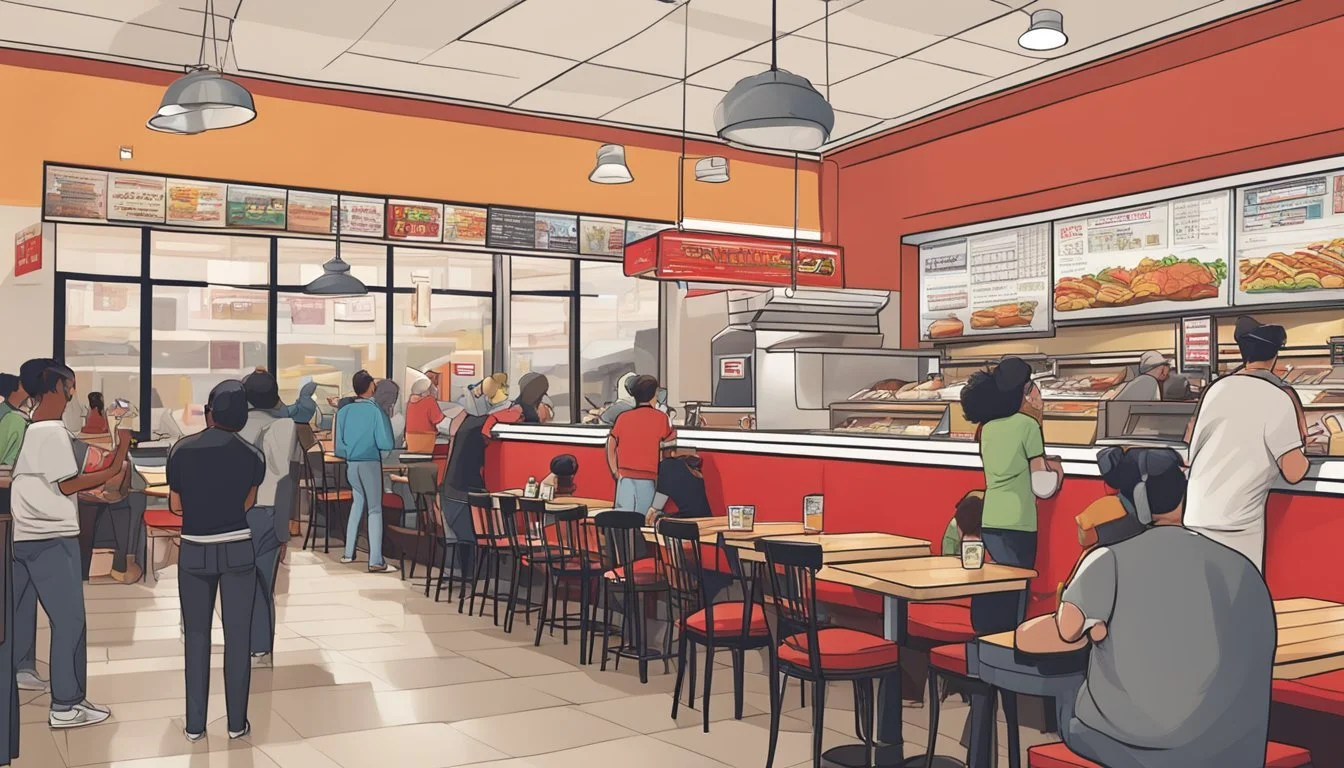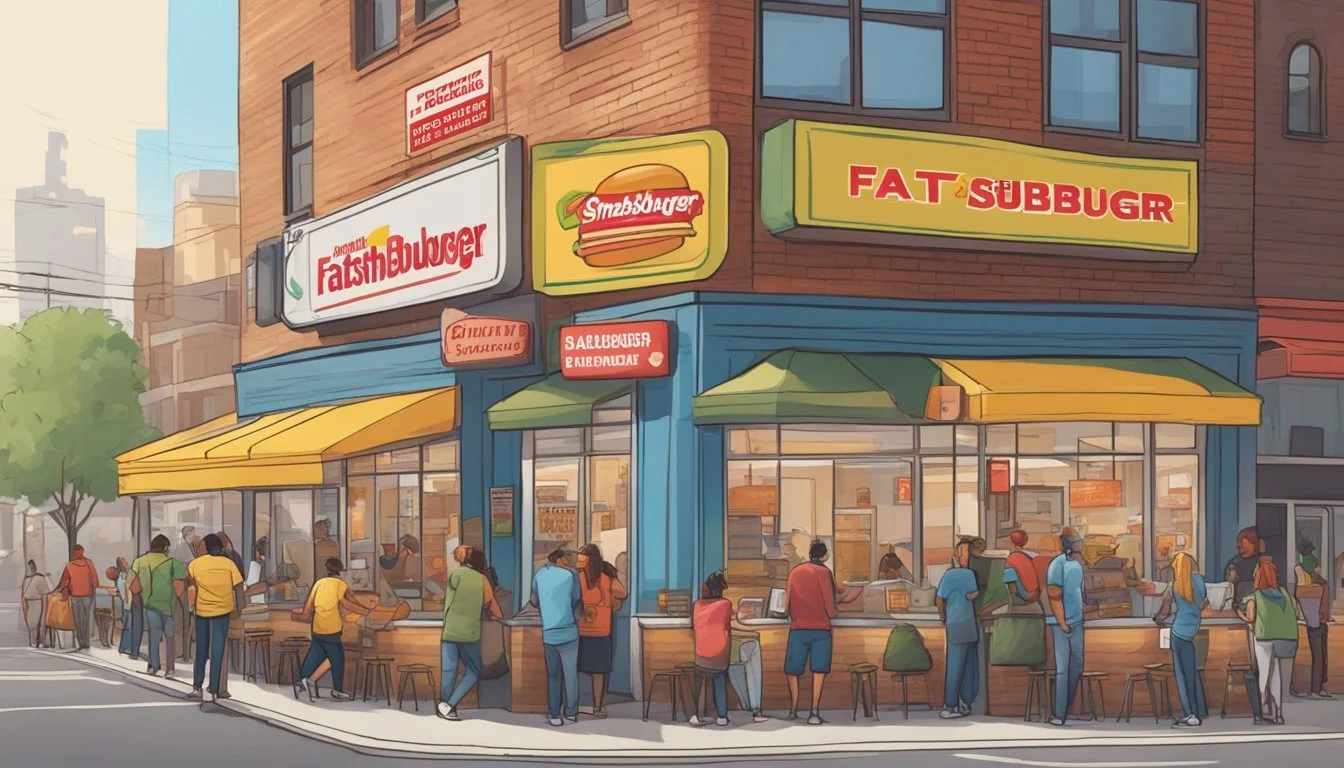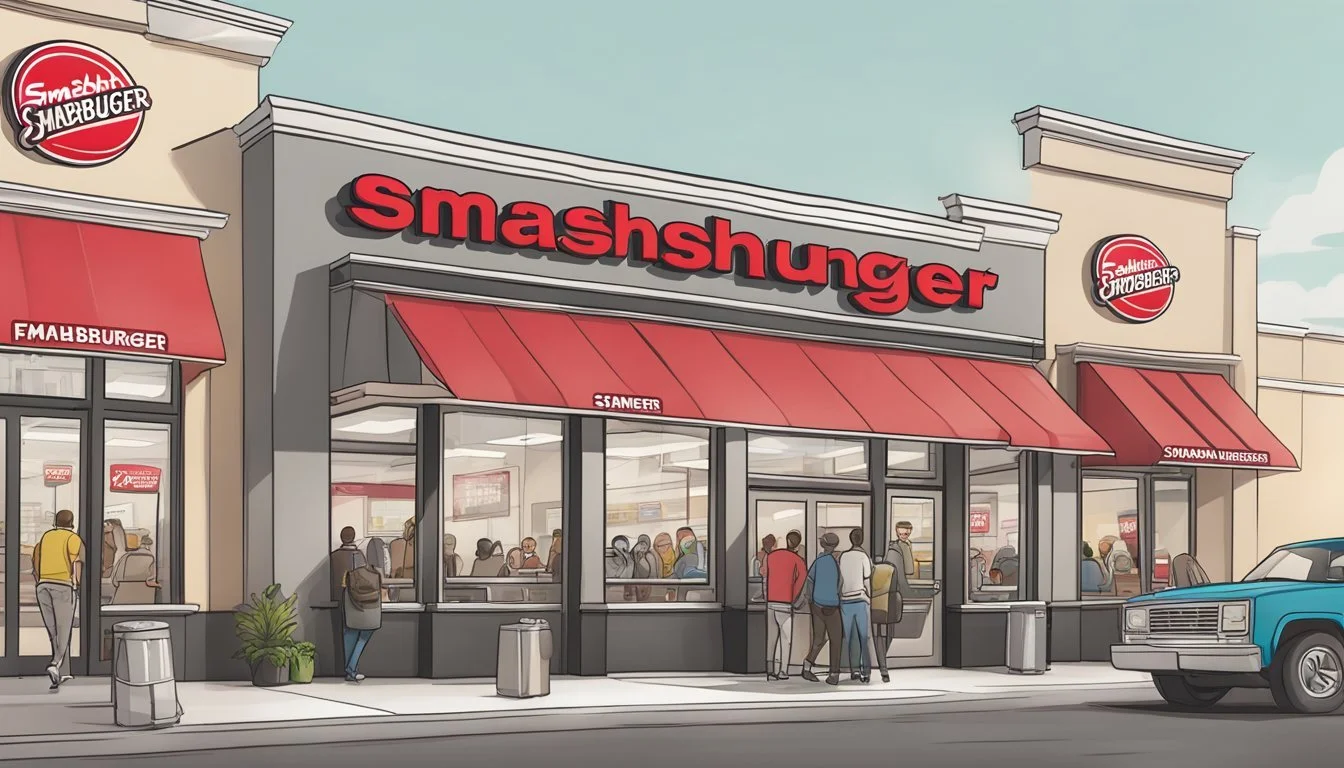Smashburger vs Fatburger
An Unbiased Comparison of Burger Excellence
The American fast-food landscape is rich with burger joints, each boasting a unique approach to crafting the classic American sandwich. Two significant players in this competitive market are Smashburger and Fatburger. Smashburger, known for its technique of smashing the beef patty on a hot griddle to sear in the juices, promises a caramelized crust and a tender interior. Fatburger offers a more traditional take, emphasizing the use of lean beef and customizable, stacked burgers.
Comparing these two chains involves scrutinizing their distinct cooking methods, ingredient quality, menu variety, and the overall dining experience. Smashburger touts a modern, casual atmosphere with a focus on fresh, never frozen, 100% Certified Angus Beef. On the other hand, Fatburger, which first opened in 1952, pitches itself as a classic burger stand, where the size and willingness to customize stand as its trademarks. The differences between the two extend to their branding; Smashburger's contemporary approach versus Fatburger's nostalgic appeal.
This debate between Smashburger and Fatburger isn't solely based on taste preferences but encompasses the ethos and evolution of American fast food, consumer expectations, and brand loyalty. As diners increasingly look for quality and flavorful options in a convenient setting, the question of which burger joint reigns supreme becomes all the more relevant. Whether it is Smashburger's smashed patties or Fatburger's hefty, lean beef offerings, the choice ultimately comes down to personal preference and what one is seeking in a burger experience.
The History and Evolution of Smashburger and Fatburger
The journey of Smashburger and Fatburger through the evolving fast-food landscape is marked by pioneering origins and strategic expansion. These brands have forged unique identities in the crowded burger marketplace.
Origin of the Brands
Smashburger began its story in Denver, Colorado, in 2007. The company's name comes from the method of smashing the burger on the grill, creating a seared patty that retains juices and flavor. On the other hand, Fatburger was founded earlier, in 1947, by Lovie Yancey in Los Angeles. Fatburger stood out for serving thick, juicy burgers during a time when smaller, slider-style burgers were the norm—the height of the Great Depression.
National Expansion
Both establishments have grown substantially from their local roots. Smashburger has spread its presence to more than 227 corporate and franchised locations across 35 U.S. states and beyond. Fatburger's expansion, although having a head start, also featured a strategic franchise model. This has allowed the Los Angeles-originated Fatburger to serve its large patties across various markets domestically and internationally.
Key Milestones
Smashburger's growth was acknowledged when it was purchased by Jollibee Foods Corporation, a significant milestone that underscored its market value. Fatburger has maintained relevance by focusing on offering lean beef and fresh ingredients, aligning with contemporary dining trends while staying true to its 'fat' origin. Both brands have become staples in the American burger scene, demonstrating successful adaptations to consumer preferences and market demands over the years.
Comparing the Burger Philosophies
Smashburger and Fatburger offer distinct dining experiences centered around their unique burger preparation philosophies. This section delves into the meat quality and sourcing, cooking methods, and customization possibilities offered by each chain.
Meat Quality and Sourcing
Smashburger prides itself on using 100% never-frozen Certified Angus Beef, which is known for its superior flavor and tenderness. This commitment to quality beef reflects a philosophy geared toward premium taste and texture. In contrast, Fatburger also emphasizes the quality of its beef, offering large, voluptuous patties made from lean beef. Although not specified as Certified Angus, Fatburger ensures that its beef is fresh, never frozen, reinforcing the chain's dedication to freshness and flavor integrity.
Signature Cooking Methods
At the heart of Smashburger's technique is the smashed patty method. Patties are smashed thin on a hot griddle, ensuring intense direct heat contact. This encourages the Maillard reaction, giving the burgers a distinctive caramelized crust. Fatburger's cooking style is less defined by the smashing process and more by providing a traditional thick, juicy patty cooked to perfection. Each chain's cooking method is a direct expression of their burger philosophy—Smashburger emphasizes a sear and crust, while Fatburger focuses on a classic, well-cooked beef experience.
Burger Customization
Customization is a key component at both chains. Smashburger offers a variety of toppings and condiments, along with superior vegan-friendly and gluten-free options, ensuring that customers can tailor their burgers to their specific tastes. Fatburger is famous for its original Fatburger, which comes with a specific set of toppings. However, customers at Fatburger can customize their burgers with a wide array of free toppings, including lettuce, pickles, tomatoes, and various sauces, satisfying the desire for a personalized burger experience.
Each burger philosophy presents customers with different but equally compelling burger experiences, from Smashburger's caramelized smash burgers to Fatburger's classic large patties. Both chains stay true to their roots while catering to the evolving tastes of their customers.
Menu Offerings and Signature Dishes
In the competitive fast-food landscape, the menus at Smashburger and Fatburger stand out with their specialty burgers and a variety of sides. Both chains cater to different preferences with their unique takes on classic American fare, but they also show commitment to inclusivity with vegetarian options.
Specialty Burgers
Smashburger offers an array of burgers, most notably the Classic Smash, which features a certified Angus beef patty, American cheese, lettuce, tomatoes, red onions, pickles, SmashSauce, and ketchup on a toasted bun. They're also known for their innovation, adding toppings like brisket and smashed avocado.
Fatburger differentiates itself with a more traditional take on burgers. Perhaps its most emblematic offering is the Original Fatburger, often ordered with cheese and customizable toppings layers like lettuce, tomato, onions, mayo, pickles, and bacon.
Sides and Accompaniments
Fries are a mainstay side item at both chains, with Smashburger known for its seasoned fries and Fatburger for its skinny and fat fries. Smashburger also offers onion rings and unique sides like fried pickles.
Vegetarian Options
Smashburger takes a lead in vegetarian offerings, notably seen through its more diverse vegetarian burgers which may include an assortment of vegetables like lettuce, tomatoes, and onions. They've also been recognized for having significantly better vegan-friendly options compared to Fatburger.
Culinary Experience and Flavor Profiles
In evaluating the culinary showdown between Smashburger and Fatburger, the emphasis falls heavily on the unique taste profiles each brand offers, the quality of the ingredients they use, and the specific sauces and toppings that define their burgers.
Burger Taste Comparison
Smashburger is renowned for its seared patties with a caramelized crust imparting a rich, deep flavor due to the Maillard reaction. Their thin patties have a crispy edge while remaining juicy inside. On the other hand, Fatburger emphasizes the traditional, thick, and grilled patties that showcase the meat's natural flavor and juiciness. Each bite of a Fatburger sandwich offers a hearty, classic burger experience characterized by a charred exterior and tender interior.
Ingredient Freshness and Quality
Both establishments prioritize ingredient quality, but their approaches differ. Smashburger features a smash technique that requires fresh, not-frozen beef to achieve its signature texture and flavors, and it's often served with melty cheese that complements the rich patty. Fatburger also boasts freshness, providing patties that are grilled to order with a selection of fresh toppings that allows a more customizable sandwich. Their meat is never frozen, ensuring a consistent quality of flavor in every bite.
Sauces and Toppings
Smashburger couples its burgers with a variety of sauces, including a special sauce that is both tangy and sweet, and an aioli that might be infused with unique ingredients, as mentioned in the snippets provided. Fatburger gives customers a more traditional experience with options like mayonnaise, ketchup, and relish, focusing on the familiar flavors that many associate with a classic American burger. Both establishments provide a range of cheese selections and toppings that can enhance the saltiness and flavor profile, with Fatburger tending towards staple toppings, while Smashburger might experiment with more novel combinations.
Brand Atmosphere and Customer Service
In considering Smashburger and Fatburger, discerning diners often look beyond the menu to examine the overall experience each brand provides. This includes the vibe of their establishments, the efficiency of the service, and the friendliness of the staff.
Dining Ambiance
Smashburger offers a contemporary and inviting atmosphere. Their restaurants are typically designed with a modern aesthetic, utilizing warm lighting and comfortable seating to create a casual dining experience that aims to welcome a diverse range of customers.
Fatburger, on the other hand, leans towards a classic American diner feel. The use of booth seating, nostalgic decor, and an open grill area where patrons can watch their burgers being cooked are characteristic of many Fatburger locations, providing a traditional fast-food experience.
Service Speed and Efficiency
At Smashburger, service is known for being swift, with a focus on delivering orders accurately and promptly. They harness technology in taking orders to streamline the purchasing process, which generally results in shorter wait times.
Fatburger emphasizes the made-to-order approach, which can sometimes mean a longer wait for food compared to other fast-food chains. However, this commitment to burger customization and fresh preparation is considered a key component of their brand's philosophy, despite the potential for slower service.
Staff and Hospitality
The staff at Smashburger are usually praised for their friendliness and responsiveness to customer needs. Training is evident in their ability to maintain a positive customer service environment even during peak hours.
In contrast, Fatburger employees are often characterized by their personable interactions, making customers feel at home. The rapport built between staff and regulars in some locations can be reminiscent of a local neighborhood joint rather than a national chain.
Pricing, Accessibility, and Value
When debating between Smashburger and Fatburger, considerations of cost, convenience, and the overall value of the dining experience take center stage. Below, the differences between these two popular burger joints are dissected on the basis of cost comparison, location convenience, and quality-to-price ratio.
Cost Comparison
Smashburger typically charges $6.99 for its Classic Smashburger, which includes a certified Angus beef patty, American cheese, lettuce, and other standard burger toppings. Fatburger offers the Fatburger, which consists of a lean beef patty among other fresh ingredients, but pricing can vary widely by location and burger size, making a direct comparison challenging. Both establishments often price their signature offerings above fast-food chains like McDonald's or Burger King, but below specialty burger venues such as Five Guys or Fuddruckers, placing them mid-range in the burger market.
Location Convenience
Smashburger and Fatburger both operate numerous outlets across the United States. Smashburger's footprint, while extensive, may not cover as many states as some competitors such as McDonald's or Burger King. Fatburger has a significant presence, especially on the West Coast, offering more options for diners in those locations. However, its availability may be limited in the central and eastern regions compared to Smashburger.
Quality-to-Price Ratio
Both Smashburger and Fatburger emphasize the quality of their ingredients, such as the use of certified Angus beef and lean meat, respectively. This focus on quality ingredients is often reflected in their menu prices, which are justified by some consumers for the value received. These restaurants provide a perceived greater value than lower-priced competitors due to higher quality ingredients and a more crafted burger experience, which justifies the expenditure for those who prioritize food quality over cost.
Nutritional Information and Health Considerations
When comparing Smashburger and Fatburger, understanding the nutritional content and health options each burger joint offers is crucial. Each restaurant provides a variety of menu items that can impact one's dietary choices.
Caloric Content of Menu Items
At Smashburger, the Classic Smashburger typically contains a certified Angus beef patty, American cheese, lettuce, tomatoes, onions, pickles, ketchup, mustard, and egg buns. As a comparison point, menu information suggests that a Big BBQ Bacon and Cheddar burger from Smashburger may contain up to 830 calories, significant amounts of saturated fats, and sodium.
Fatburger, on the other hand, while not detailed in the provided data, offers a range of burgers that can vary in caloric content based on choices like size of the burger (e.g., the referenced "XXXL Fatburger"), additional toppings such as cheese, bacon, and sauces, as well as choices of bread.
Healthier Menu Options
Smashburger is noted for its vegan-friendly options and gluten-free alternatives, allowing for burgers that may better cater to specific dietary needs. One can opt for a lettuce wrap instead of a bun or omit high-calorie toppings like mayo and cheese to reduce the fat content.
Comparatively, Fatburger's customization options enable patrons to construct a potentially healthier burger. They can choose leaner meats, add more veggies, and skip high-calorie sauces and cheeses. Both chains may offer basic burgers, such as a simple hamburger at lower caloric thresholds, but these usually come without the additional high-calorie toppings.
The availability and variety in menu options play a pivotal role in being able to make a nutritionally informed choice at either burger joint.
Customer Loyalty and Brand Perception
The fierce competition among fast food burger joints like Smashburger and Fatburger is marked by the brands' ability to secure repeat customers and navigate market challenges uniquely. Consumer preferences and loyalty play critical roles in sustaining their business amidst rivals such as Shake Shack, In-N-Out, and others.
Repeat Customers and Brand Advocacy
Smashburger and Fatburger both enjoy a base of repeat customers, although their strategies for brand advocacy differ. Smashburger leverages its signature smashing technique, which creates a distinct taste and texture, often generating customer curiosity and subsequent loyalty. Fatburger, meanwhile, capitalizes on the perceived quality of their offerings, highlighting their use of lean beef and claiming a more health-conscious approach to a traditionally indulgent product.
Brand Advocates: Those in favor of Smashburger often point to the brand's variety and innovative recipes, while Fatburger customers appreciate the classic taste and customizable options.
Repeat Patronage: It is driven by both brand's ability to consistently deliver on their unique selling propositions, making them highly competitive in the eyes of the burger-loving public.
Market Positioning and Challenges
In a crowded industry that includes names like Shake Shack, In-N-Out, and A&W, positioning is everything.
Smashburger's Positioning:
Innovative and fresh: Focuses on offering artisanal burgers and a modern dining experience.
Challenges: Staying ahead with trends and maintaining the uniqueness of their menu.
Fatburger's Positioning:
Retro and reliable: Appeals to nostalgia while emphasizing quality ingredients.
Challenges: Distinguishing itself from rivals such as In-N-Out that share a similar retro vibe and are well-established in the market.
Both brands continuously strategize to remain appealing to diners who are bombarded with choices ranging from Dairy Queen's economical fast food options to White Castle's sliders, Culver's butter burgers, and the classic appeal of Steak 'n Shake. Keeping a firm grasp on their unique market position is vital in the face of these challenges.
Positive and Negative Reviews Analysis
When comparing Smashburger and Fatburger, a detailed examination of customer reviews and critic assessments provides insight into their strengths and areas for improvement.
Critics and Consumer Feedback
Smashburger: Critics often praise Smashburger for its flavorful patties and the signature crispy edges that result from the smashing technique. Consumers resonate with this sentiment, frequently applauding the chain's experimental toppings, like brisket and smashed avocado, which assuage the culinary adventurous. However, some negative reviews point to consistency issues, where occasionally, the execution fails to meet the expectations set by the brand's inventive menu.
Fatburger: Fatburger receives kudos for offering superior vegan options, which appeals greatly to a niche, yet growing demographic. They also garner positive attention for better gluten-free choices, reflecting a commitment to inclusive dining experiences. On the flip side, critics mention that the less frequent discounts and promotions might detract from the overall value proposition, potentially alienating budget-conscious patrons.
Online Ratings and Comments
In online ratings, both establishments boast commendable scores. However, contrasts become evident when analyzing customer comments:
Smashburger: Commonly mentioned in positive comments are terms like "juicy," "crispy," and "innovative." Negative feedback, although less frequent, cites instances of perceived overpricing and longer wait times during peak hours.
Aspect Positive Comments Negative Comments Flavor High Sometimes inconsistent Creativity High -
Fatburger: Positive remarks often highlight "customization options" and appreciation for dietary accommodations. Negative comments occasionally focus on the lower frequency of promotional deals, suggesting that price-sensitive customers might prefer Smashburger’s frequent discounts.
Aspect Positive Comments Negative Comments Dietary Options High - Value - Less frequent promotions
In summarizing online feedback, one notes that consumers value the crispy and unique flavors at Smashburger and the dietary accommodations and customization at Fatburger. Both brands have distinct strengths that resonate with their respective audiences.
Conclusion
In the comparison between Smashburger and Fatburger, each establishment offers its own unique dining experience catered to different preferences.
Smashburger gains an edge with greater brand recognition and more frequent discounts and promotions. Customers looking for vegan or gluten-free options will find Smashburger to be more accommodating, enhancing its appeal to those with specific dietary needs.
On the other hand, Fatburger satisfies with its flagship offering, the Fatburger, known for its lean beef despite the indulgent name. The brand sticks to a traditional approach, focusing on quality ingredients without an extensive array of alternative diet options.
Both chains have loyal followings and serve freshly made burgers that prioritize taste and customer satisfaction.
Smashburger
Brand Recognition: High
Promotions: Frequent
Vegan Options: Better
Gluten-free Options: Better
Signature Burger: Standard, customizable toppings
Fatburger
Brand Recognition: Moderate
Promotions: Less frequent
Vegan Options: Limited
Gluten-free Options: Limited
Signature Burger: Fatburger with lean beef
Ultimately, consumers may choose based on personal preference, dietary restrictions, or promotional offers available at the time of their visit. Both Smashburger and Fatburger provide quality options within the fast-casual burger market, ensuring customers can satisfy their cravings no matter their choice.











